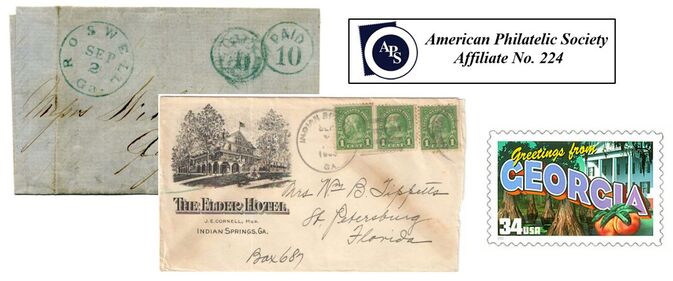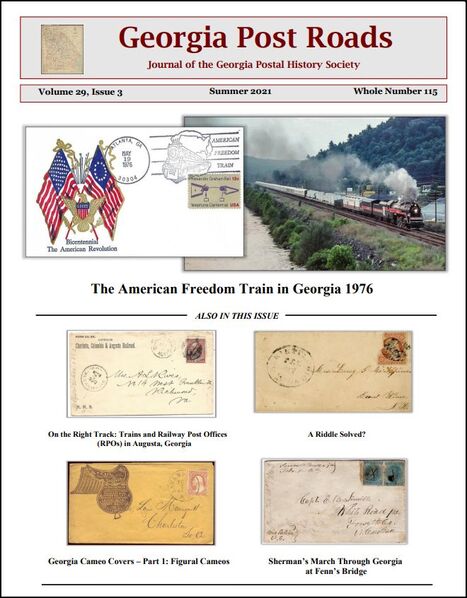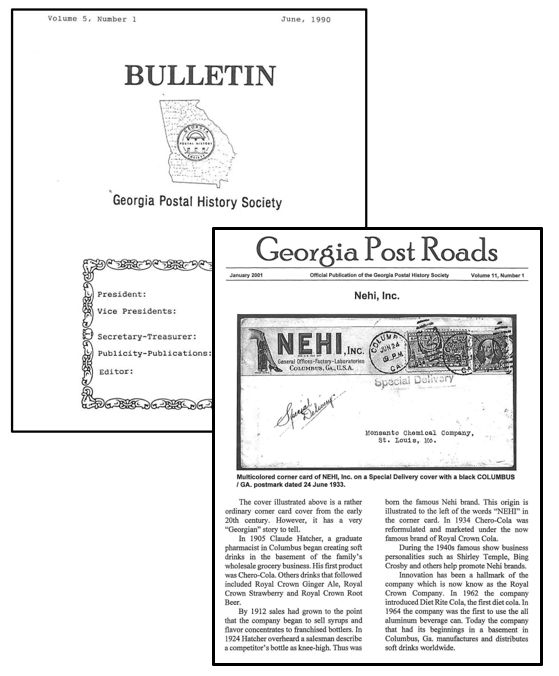Georgia Postal History Society
History of the Society
The Georgia Postal History Society began as a suggestion by Ervin Underwood to form a society to study the postal history of Georgia. Four collectors, McCary Ballard, Frank Crown, Tom Kingsley, and William McDougall, responded to the suggestion and met with Underwood on 15 April 1984 to discuss the idea. At that time is was agreed to proceed with the formation of a society and Underwood volunteered to act as Secretary protem until a formal structure was established.
By the end of the year the structure of the society was agreed upon and the first elections conducted. The officers selected for the first three year term were Ervin Underwood, President; Francis J. Crown, Jr., Vice- President; Douglas N. Clark, Secretary; and Ernest C. Owens, Treasurer.
The society, which numbers 35 members, meets once a year at what is now called the Southeastern Stamp Expo (formerly Peach State Stamp Show). The annual meeting always includes an informative seminar by a GPHS member that is open to all members of the public.
Benefits of Membership
The Georgia Postal History Society is devoted to the study of all aspects of Georgia postal history. This includes the pre-stamp, or stampless, period that dates back to the late 1700s, the Confederate period, fancy cancels, machine postmarks, RFD markings, railroad markings, flight covers, first days, last days, use of a particular stamp on covers from Georgia and just about anything else you can think of that mixes stamp collecting and Georgia. Basically there is something for everyone.
Benefits of membership include a quarterly journal, Georgia Post Roads and the annual meeting held each year at the Southeastern Stamp Expo in Atlanta. You also have the benefit of meeting and corresponding with other members of the society, many of whom are recognized experts in their Georgia postal history specialty.
Are you interested in becoming a member? The best way to join is to come to the Southeastern Stamp Expo and meet current members and obtain a membership application. Or, download and complete the membership application (below link) and send to the Society's President, Steve Swain (at the address below).
The Georgia Postal History Society began as a suggestion by Ervin Underwood to form a society to study the postal history of Georgia. Four collectors, McCary Ballard, Frank Crown, Tom Kingsley, and William McDougall, responded to the suggestion and met with Underwood on 15 April 1984 to discuss the idea. At that time is was agreed to proceed with the formation of a society and Underwood volunteered to act as Secretary protem until a formal structure was established.
By the end of the year the structure of the society was agreed upon and the first elections conducted. The officers selected for the first three year term were Ervin Underwood, President; Francis J. Crown, Jr., Vice- President; Douglas N. Clark, Secretary; and Ernest C. Owens, Treasurer.
The society, which numbers 35 members, meets once a year at what is now called the Southeastern Stamp Expo (formerly Peach State Stamp Show). The annual meeting always includes an informative seminar by a GPHS member that is open to all members of the public.
Benefits of Membership
The Georgia Postal History Society is devoted to the study of all aspects of Georgia postal history. This includes the pre-stamp, or stampless, period that dates back to the late 1700s, the Confederate period, fancy cancels, machine postmarks, RFD markings, railroad markings, flight covers, first days, last days, use of a particular stamp on covers from Georgia and just about anything else you can think of that mixes stamp collecting and Georgia. Basically there is something for everyone.
Benefits of membership include a quarterly journal, Georgia Post Roads and the annual meeting held each year at the Southeastern Stamp Expo in Atlanta. You also have the benefit of meeting and corresponding with other members of the society, many of whom are recognized experts in their Georgia postal history specialty.
Are you interested in becoming a member? The best way to join is to come to the Southeastern Stamp Expo and meet current members and obtain a membership application. Or, download and complete the membership application (below link) and send to the Society's President, Steve Swain (at the address below).
| Georgia Postal History Society - Membership Application.doc | |
| File Size: | 32 kb |
| File Type: | doc |
Officers Contact
Our current slate of elected officers is: Steve Swain, President [email protected]
President: Steve Swain
Vice-President: Open
Treasurer: Douglas N. Clark
President Emeritus: Douglas N. Clark
Our current slate of elected officers is: Steve Swain, President [email protected]
President: Steve Swain
Vice-President: Open
Treasurer: Douglas N. Clark
President Emeritus: Douglas N. Clark
Georgia Post Roads
The official Journal of the Georgia Postal History Society, Georgia Post Roads, is published quarterly featuring articles on various aspects of Georgia postal history. Articles for publication may be submitted in the form of typed manuscript or, preferably, via email.
Articles by Society members and non-members are welcomed. Contact: Steve Swain, Editor.
|
The Digital G.P.H.S. Bulletin and Georgia Post Roads
With a May 1985 publication date, the G. P. H. S. Bulletin was the first journal of the Georgia Postal History Society. The first three volumes were titled G. P. H. S. Bulletin. The second three volumes were titled Bulletin. The first issue of Georgia Post Roads was published in September 1991. The stated purpose was not as “a replacement for the GPHS Bulletin but rather a means to keep the lines of communication open between members of the society and to provide timely information of interest to all members.” The subheading in the banner of the early issues sums up this up: “Newsletter of the Georgia Postal History Society.” Beginning with the January 1994 issue GPR took on a more formal role as noted by the new subheading in the banner: “Publication of the Georgia Postal History Society.” Digital files, in an Adobe PDF format, of the G.P.H.S. Bulletin and Georgia Post Roads are provided below for viewing and/or downloading. Also provided is an index for the Bulletin and Georgia Post Roads. Guidance for searching the digital files is provided in the Searching the Digital Files document. The Adobe Acrobat Reader program (or an other PDF file viewer program) is needed to open the digital files. The Adobe Reader software is free and can be downloaded via www.adobe.com.
| |||||||||||||||||||||||||||||||||||||||||||||||||||||||||||||||||||
| Bulletin of the GPHS Vols 1-6 (1985-1991) | |
| File Size: | 47529 kb |
| File Type: | |
| Georgia Post Roads Vols 1-5 (1991-1995) | |
| File Size: | 46791 kb |
| File Type: | |
| Georgia Post Roads Vols 6-10 (1996-2000) | |
| File Size: | 60463 kb |
| File Type: | |
| Georgia Post Roads Vols 11-15 (2001-2005) | |
| File Size: | 46311 kb |
| File Type: | |
| Georgia Post Roads Vols 16-20 (2006-2012) | |
| File Size: | 32107 kb |
| File Type: | |
| Georgia Post Roads Vols 21-25 (2013-2017) | |
| File Size: | 52539 kb |
| File Type: | |
| Georgia Post Roads Vols 26-29 (2018-2021) | |
| File Size: | 66386 kb |
| File Type: | |
| GPHS Bulletin Index | |
| File Size: | 79 kb |
| File Type: | |
| Georgia Post Roads Index | |
| File Size: | 79 kb |
| File Type: | |
| Searching the Digital Files | |
| File Size: | 52 kb |
| File Type: | |
G.P.H.S. Bulletin and Georgia Post Roads Index
The index is available in three versions, each in a downloadable PDF format:
(1) Sorted by Volumne-Number-Year
(2) Sorted by Article Title
(3) Sorted by Author's name.
| Index - Volume-Number-Year Sort | |
| File Size: | 404 kb |
| File Type: | |
| Index - Article Title Sort | |
| File Size: | 395 kb |
| File Type: | |
| Index - Author's Name Sort | |
| File Size: | 389 kb |
| File Type: | |

Society Members Literature Competition Awards
Sarasota National Stamp Expo, January 19-21, 2024
Michael Wing
Postal History Society Award: "Georgia Postmaster Free Frank Letters"
Gold: "Georgia Postmaster Free Frank Letters""
SESCAL, October 29, 2022
Steve Swain
Large Vermeil: " 'Local Usage' Prevails for Name of Town and Post Office"
Great American Stamp Show 2022
Steve Swain
Large Vermeil: " 'Local Usage' Prevails for Name of Town and Post Office"
Vermeil: The Postal History of Saint Simons Island, Georgia
Large Vermeil: The Florida Postal History Journal (Editor: Steve Swain)
Nancy B. Clark
Gold: "An Oddity Uncovers a Short-Lived Registry Plan"
Large Vermeil: "Fort Oglethorpe Georgia Internee's Postcard: Written From a Spy
to a Spy?"
Large Vermeil: "The Sinking of the P.R.R. Ferry Chicago, October 31, 1899:
SESCAL, October 9, 2021
Nancy B. Clark
Gold: "Steamship City of Rockland"
Silver: "World War II Trainee and POW Mail Camp Wheeler, Macon, Georgia"
Great American Stamp Show, August 12-15, 2021
Francis J. Crown, Jr.
Vermeil: "The 3c Nashville Provisional Adhesive: A Study in Postal History Research"
Vermeil: As posted on the Civil War Philatelic Society’s website: “Crown Illustrated Censuses of Confederate Postmasters’ Provisionals”
Sarasota National Stamp Expo, January 22-24, 2021
Francis J. Crown, Jr.
Reserve Grand Award: “The 10¢ Red ‘Southern Confederacy’ Danville, Va., Provisional Envelope
Large Gold: “The 10¢ Red ‘Southern Confederacy’ Danville, Va., Provisional Envelope
Gold: “Athens, Georgia, Provisional Gutter Pairs”
Southern California SESCAL, October 3, 2020
Francis J. Crown, Jr.
Gold: “The 10¢ Red ‘Southern Confederacy’ Danville, Va., Provisional Envelope
Gold: “Dr. H. H. Green: An Early ‘Junk Mailer’
Steve Swain
Large Vermeil: “Thrilling Adventures in Stamp Comics”
Large Vermeil: “Fake Town Spanish-American War Postal History”
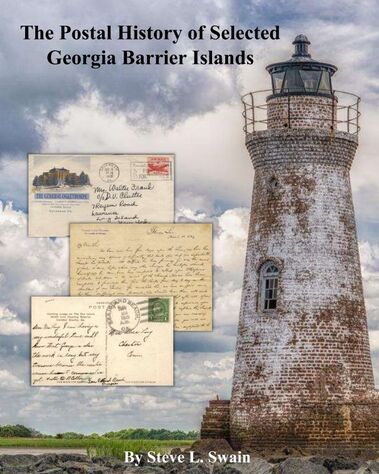
The Postal History of Selected Georgia
Barrier Islands
Steve L. Swain
This image rich study ventures into a new field offering a look into one aspect of Georgia’s postal history, a state with very few published resources. The monograph presents noteworthy postal history of three of the seventeen Georgia barrier islands.
The 8.5 x 11-inch, full color, 86-page monograph can be ordered from the author at [email protected].
Jekyll Island
The history of the Jekyll Island post office has an intriguing chapter involving the US Postal Service and the Jekyll Island Authority. Established July 1, 1959, until 2015, the island was served by a contract branch of the main post office in Brunswick, on the mainland. Today, the island has its own postal facility in the historic district, although it is common for mailings posted on the island to be processed and postmarked in Jacksonville, Florida.
Sapelo Island
Sapelo Island’s postal history is associated with several towns, post offices and names of those offices. An awareness and appreciation of this history begins with a section of the 1895 Post Route Map of the State of Georgia showing the towns and mail route components linking Sapelo Island.
Thomas Spalding (1774-1851) left the most important legacy to Sapelo Island and, as many people will insist, to most of the Georgia barrier islands. The history of the current day post office on Sapelo Island is a fascinating element of Spalding’s legacy.
Sea Island
Sea Island is an internationally known resort and residential colony located near St. Simons Island in Glynn County. The island is a privately owned and unincorporated. It is approximately five miles long and one and a half miles wide at its widest point.
The history of the Sea Island post office is a story of several locations and public hearings. Sea Island residents were adamant about not wanting their postal facility to be the St. Simons office 1.7 miles away, and eventually prevailed.
Barrier Islands
Steve L. Swain
This image rich study ventures into a new field offering a look into one aspect of Georgia’s postal history, a state with very few published resources. The monograph presents noteworthy postal history of three of the seventeen Georgia barrier islands.
The 8.5 x 11-inch, full color, 86-page monograph can be ordered from the author at [email protected].
Jekyll Island
The history of the Jekyll Island post office has an intriguing chapter involving the US Postal Service and the Jekyll Island Authority. Established July 1, 1959, until 2015, the island was served by a contract branch of the main post office in Brunswick, on the mainland. Today, the island has its own postal facility in the historic district, although it is common for mailings posted on the island to be processed and postmarked in Jacksonville, Florida.
Sapelo Island
Sapelo Island’s postal history is associated with several towns, post offices and names of those offices. An awareness and appreciation of this history begins with a section of the 1895 Post Route Map of the State of Georgia showing the towns and mail route components linking Sapelo Island.
Thomas Spalding (1774-1851) left the most important legacy to Sapelo Island and, as many people will insist, to most of the Georgia barrier islands. The history of the current day post office on Sapelo Island is a fascinating element of Spalding’s legacy.
Sea Island
Sea Island is an internationally known resort and residential colony located near St. Simons Island in Glynn County. The island is a privately owned and unincorporated. It is approximately five miles long and one and a half miles wide at its widest point.
The history of the Sea Island post office is a story of several locations and public hearings. Sea Island residents were adamant about not wanting their postal facility to be the St. Simons office 1.7 miles away, and eventually prevailed.
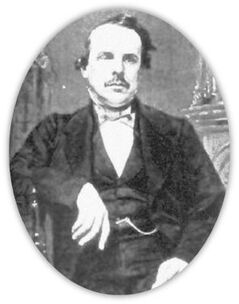
Georgia on Cover: "I Go to Illustrate Georgia"
These words were said by Francis Bartow on May 21, 1861, at the Savannah railroad station when Barlow was preparing to depart for Virginia as Captain of Savannah’s elite Oglethorpe Light Infantry. It was a response to the criticism he had received from Governor Brown for leaving Georgia.
Francis S. Bartow (September 6, 1816 – July 21, 1861) (left image) was a licensed attorney turned politician who served two terms in the United States House of Representatives and became a political leader of the Confederate States of America. In 1856 he was elected captain of Savannah’s elite Oglethorpe Light Infantry.
The Georgia General Assembly summoned delegates to a Secession Convention in Milledgeville which began January 16, 1861. On May 28, 1861, elections were held to select representatives to the convention, and Bartow emerged as a delegate. At the convention, Bartow stood out as one of the most fervent secessionists. Demanding an immediate withdrawal from the Union, he helped align Georgia among the pro-secessionist states.
These words were said by Francis Bartow on May 21, 1861, at the Savannah railroad station when Barlow was preparing to depart for Virginia as Captain of Savannah’s elite Oglethorpe Light Infantry. It was a response to the criticism he had received from Governor Brown for leaving Georgia.
Francis S. Bartow (September 6, 1816 – July 21, 1861) (left image) was a licensed attorney turned politician who served two terms in the United States House of Representatives and became a political leader of the Confederate States of America. In 1856 he was elected captain of Savannah’s elite Oglethorpe Light Infantry.
The Georgia General Assembly summoned delegates to a Secession Convention in Milledgeville which began January 16, 1861. On May 28, 1861, elections were held to select representatives to the convention, and Bartow emerged as a delegate. At the convention, Bartow stood out as one of the most fervent secessionists. Demanding an immediate withdrawal from the Union, he helped align Georgia among the pro-secessionist states.
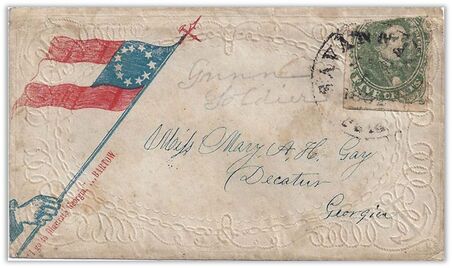
On January 19, 1861, delegates voted to secede from the Union by a vote of 208 to 89. Bartow was a delegate in favor of secession, voting to sign Georgia's Ordinance of Secession on that day.
On the second day of the Congress, Bartow became chairman of the Military Committee. He helped select the color and style of the initial Confederate gray uniforms. During a later session, Bartow announced that he would depart for the battlefront, taking his Oglethorpe Light Infantry up to Virginia.
Bartow telegraphed the news to his Georgia troops, arranging a prompt rally. However, his plans were blocked by Governor Brown, who had already decided to concentrate the state's armed forces strictly for the defense of Georgia. Bartow appealed personally to the Confederate President, Jefferson Davis. Davis immediately approved Bartow's plan and designated him the commander of the new Confederate force, making Bartow's Oglethorpe Light Infantry the first company to officially contribute its services to the Confederacy's national war effort.
An angry Governor Brown countered by publishing an aggressively tough letter in all Georgia newspapers on May 21, 1861. Among other things, he alleged that Bartow was seeking his own glory by assuring a high command and aspiring to a promotion. To him, Bartow was actually deserting the war "to serve the common cause in a more pleasant summer climate."
Nonetheless, Bartow arrived in Savannah on May 21 to assemble his 106 soldiers and to arrange for a train to take them to Virginia's battlefront. A great rally of cheerful citizens congregated at the station, accompanied by the remaining local militia, which fired an artillery salute in Bartow's honor.
Before departing, Bartow pronounced to the crowd his most celebrated phrase: "I go to illustrate Georgia." The below image of a patriotic cover postmarked in Savannah to Decatur, Georgia displays Bartow’s celebrated phase in the lower left corner underneath the flag staff.
At the First Battle of Manassas (First Bull Run), Bartow encouraged his troops to follow him toward the enemy by cheering "Boys, follow me!" and waving his cap frantically over his head.
Just then, a projectile perforated his chest, fatally lodging in his heart. Some of his soldiers gathered around him, witnessing his last words: "Boys, they have killed me, but never give up the field."
Lying on the ground and wrapped in Col. Lucius Gartrell’s arms, Francis Bartow died. He was the first brigade commander of the Confederate States Army to be killed in action during the Civil War.
On the second day of the Congress, Bartow became chairman of the Military Committee. He helped select the color and style of the initial Confederate gray uniforms. During a later session, Bartow announced that he would depart for the battlefront, taking his Oglethorpe Light Infantry up to Virginia.
Bartow telegraphed the news to his Georgia troops, arranging a prompt rally. However, his plans were blocked by Governor Brown, who had already decided to concentrate the state's armed forces strictly for the defense of Georgia. Bartow appealed personally to the Confederate President, Jefferson Davis. Davis immediately approved Bartow's plan and designated him the commander of the new Confederate force, making Bartow's Oglethorpe Light Infantry the first company to officially contribute its services to the Confederacy's national war effort.
An angry Governor Brown countered by publishing an aggressively tough letter in all Georgia newspapers on May 21, 1861. Among other things, he alleged that Bartow was seeking his own glory by assuring a high command and aspiring to a promotion. To him, Bartow was actually deserting the war "to serve the common cause in a more pleasant summer climate."
Nonetheless, Bartow arrived in Savannah on May 21 to assemble his 106 soldiers and to arrange for a train to take them to Virginia's battlefront. A great rally of cheerful citizens congregated at the station, accompanied by the remaining local militia, which fired an artillery salute in Bartow's honor.
Before departing, Bartow pronounced to the crowd his most celebrated phrase: "I go to illustrate Georgia." The below image of a patriotic cover postmarked in Savannah to Decatur, Georgia displays Bartow’s celebrated phase in the lower left corner underneath the flag staff.
At the First Battle of Manassas (First Bull Run), Bartow encouraged his troops to follow him toward the enemy by cheering "Boys, follow me!" and waving his cap frantically over his head.
Just then, a projectile perforated his chest, fatally lodging in his heart. Some of his soldiers gathered around him, witnessing his last words: "Boys, they have killed me, but never give up the field."
Lying on the ground and wrapped in Col. Lucius Gartrell’s arms, Francis Bartow died. He was the first brigade commander of the Confederate States Army to be killed in action during the Civil War.
Georgia Postmaster and County Postmarks by Michael Wing
2024 Annual Meeting Presentation
The 2024 annual meeting of the Georgia Postal History Society was held January 27 at the Peachtree Corners, Ga., Southeastern Stamp Expo. Michael Wing presented his research on Georgia postmaster and county postmarks. Please open the PowerPoint presentation provided below to view the presentation.
2024 Annual Meeting Presentation
The 2024 annual meeting of the Georgia Postal History Society was held January 27 at the Peachtree Corners, Ga., Southeastern Stamp Expo. Michael Wing presented his research on Georgia postmaster and county postmarks. Please open the PowerPoint presentation provided below to view the presentation.
| Georgia Postmaster and County Postmarks | |
| File Size: | 29881 kb |
| File Type: | ppt |
The Postal History of Sapelo Island, Georgia by Steve L. Swain
2022 Annual Meeting Presentation
The 2022 annual meeting of the Georgia Postal History Society was held January 29 at the Peachtree Corners, Ga., Southeastern Stamp Expo. Steve Swain presented his research on the postal history of Sapelo Island, Georgia, one of the seventeen Georgia barrier islands. Please open the PowerPoint presentation provided below to view the presentation.
2022 Annual Meeting Presentation
The 2022 annual meeting of the Georgia Postal History Society was held January 29 at the Peachtree Corners, Ga., Southeastern Stamp Expo. Steve Swain presented his research on the postal history of Sapelo Island, Georgia, one of the seventeen Georgia barrier islands. Please open the PowerPoint presentation provided below to view the presentation.
| The Postal History of Sapelo Island, Georgia | |
| File Size: | 15741 kb |
| File Type: | ppt |
Patriotic Envelopes of Camp George H. Thomas, Lytle, Georgia, Spanish-American War by James C. Cate
2020 Annual Meeting Presentation
The 2020 annual meeting of the Georgia Postal History Society was held on February 1 at the Peachtree Corners, Ga., Southeastern Stamp Expo. James Cate presented his research and collection related to patriotic covers associated with Camp George H. Thomas and Lytle, Georgia during the brief Spanish-American War. Please open the PowerPoint presentation below to "read the story" and view the covers shown during the presentation.
| Patriotic Envelopes of Camp George H. Thomas | |
| File Size: | 15184 kb |
| File Type: | pptx |
"Absolutely Fireproof" Postal History
2019 Annual Meeting Presentation
The 2019 annual meeting of the Georgia Postal History Society was held on January 26 at the Peachtree Corners, Ga., Southeastern Stamp Expo. Michael Wing presented his research and collection related to hotel advertising covers announcing "Absolutely Fireproof" buildings. A most notable cover in Michael's collection is for the Winecoff Hotel in Atlanta that burned in one of the worst hotel fires in history. Please open the PowerPoint presentation below to "read the story" and view the photos and covers shown during the presentation.
2019 Annual Meeting Presentation
The 2019 annual meeting of the Georgia Postal History Society was held on January 26 at the Peachtree Corners, Ga., Southeastern Stamp Expo. Michael Wing presented his research and collection related to hotel advertising covers announcing "Absolutely Fireproof" buildings. A most notable cover in Michael's collection is for the Winecoff Hotel in Atlanta that burned in one of the worst hotel fires in history. Please open the PowerPoint presentation below to "read the story" and view the photos and covers shown during the presentation.
| "Absolutely Fireproof" Hotel Advertising Covers | |
| File Size: | 27898 kb |
| File Type: | ppt |
Camp Thomas - Chickamauga Park - Lytle Ga: Spanish-American War Postal History
2018 Annual Meeting Presentation and Discussion
The 2018 annual meeting of the Georgia Postal History Society was held on January 27 at the Norcross, Ga., Southeastern Stamp Expo. The presentation and discussion at the meeting explored Spanish-American War postal history related to three closely associated areas in Georgia: Camp Thomas, Chickamauga National Park (Battlefield) and Lytle, Ga. Please open the PowerPoint presentation provided below to "read the story" and view the photos and covers shown during the presentation.
2018 Annual Meeting Presentation and Discussion
The 2018 annual meeting of the Georgia Postal History Society was held on January 27 at the Norcross, Ga., Southeastern Stamp Expo. The presentation and discussion at the meeting explored Spanish-American War postal history related to three closely associated areas in Georgia: Camp Thomas, Chickamauga National Park (Battlefield) and Lytle, Ga. Please open the PowerPoint presentation provided below to "read the story" and view the photos and covers shown during the presentation.
| Camp Thomas-Chickamauga Park-Lytle, Ga: Spanish-American War Postal History | |
| File Size: | 20397 kb |
| File Type: | ppt |

